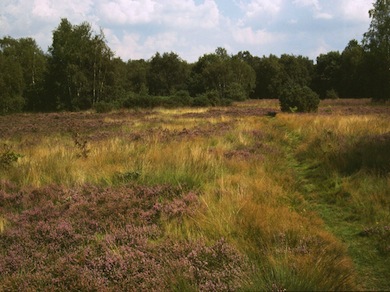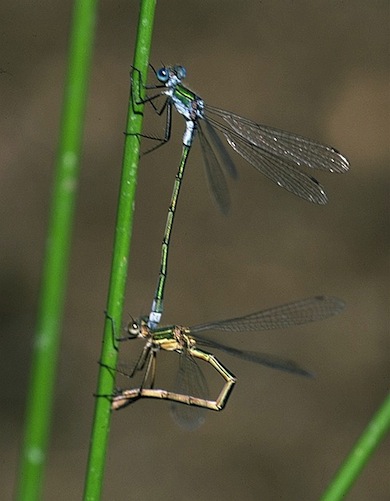It is often overlooked that this site is made up of two adjacent commons, Wimbledon and Putney, although their histories are of course closely connected. While Putney Heath is split in half by the A3, Wimbledon Common extends south all the way to Copse Hill and the adjacent Royal Wimbledon Golf Course (south). The whole expanse is the largest surviving area of common land in London, saved by an Act of Parliament in 1871 declaring that the site should remain open and unenclosed.This large site supports over half of all the remaining heathland in London. High quality habitats associated with acidic soils include both wet and dry heath; one of London’s very few valley bogs; extensive areas of acid grassland, woodland and scrub; several ponds and a section of the Beverley Brook. This site includes two London Wildlife Trust managed Local Nature Reserves; Fishpond Wood and Beverley Meads and Farm Bog, where volunteer management workdays are held most Sundays (call 020 7261 0447 for details). Caesar’s Camp is a scheduled Ancient Monument seen from the footpath crossing the Royal Wimbledon Golf Course, which occupies much of the southern part of the site. Much of the site is a Site of Special Scientific Interest and a Special Area of Conservation (EU Habitats Directive).Merton Healthy Walks and Morden Start the Week with a Walk use this site both Walking the Way to Health (WHI) schemes; see links for details.
Local Wildlife Site
Accessible Sites of Importance for Nature Conservation
Wimbledon Common and Putney Heath
Borough: Kingston upon Thames, Merton, Wandsworth
Grade: Metropolitan
Access: Free public access (all/most of site)
Area: 449.66 ha
Description
Wildlife
Now being so rare in London, the heathland and bog habitats support a great many uncommon plants, including cross-leaved heath, four species of bog-mosses, floating club-rush, lemon-scented fern, star sedge and a nationally rare liverwort (moss-relatives) called veilwort (Pallavicinia lyellii). Others include bog-bean, bulbous rush, oval sedge, water horsetail, marsh pennywort and lesser skullcap. Drier heathland and acid grassland has creeping willow, spring vetch at its only London locality, as well as many types of lichen. In 2001, 129 species of fungi were observed by experts leading a fungus foray at the site.The breeding birdlife includes several declining species, such as skylark, bullfinch and linnet. Two classic birds of heathland, stonechat and hobby, are also here.The site is also very important for insects, supporting an important population of stag beetles and perhaps the best community of dragonflies and damselflies in London. This includes several local rarities, such as the emerald damselfly and black darter, common hawker and keeled skimmer dragonflies. The nationally scarce white-letter hairstreak butterfly is also present.There are also several species of protected reptiles and bats.Facilities
Information (on signs and at The Windmill information centremuseum); refreshments; cycle paths; historic features; horse riding; nature trail; toilets. The Capital Ring and Beverley Brook Walks pass through the site.
View across the heathland at Wimbledon Common © Mike Waite

Emerald damselflies mating © Stephen Frank
Feedback
Have a question or a comment for this site, or notice anything missing or out of date? Please contact us.
